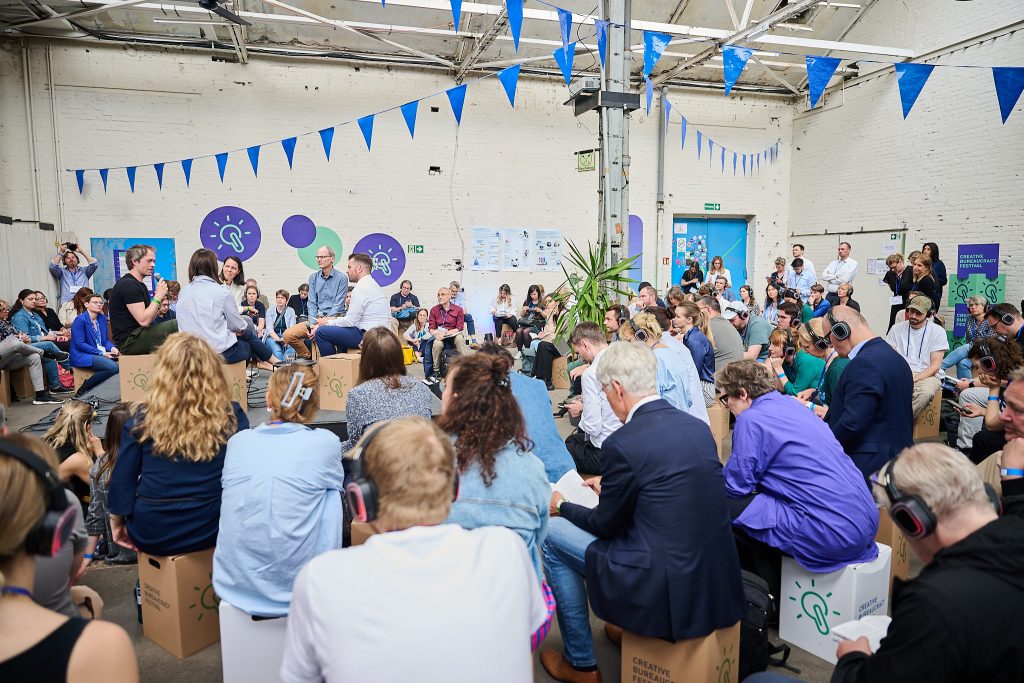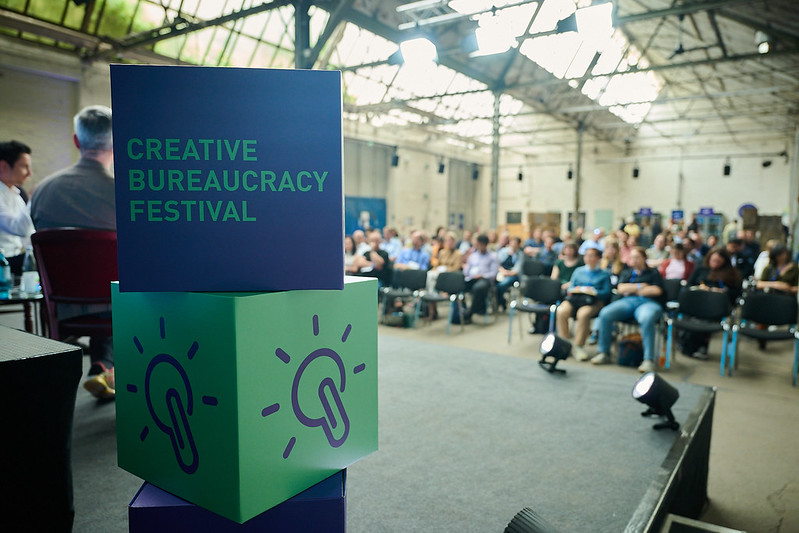
Reflections from the 2025 Creative Bureaucracy Festival
The phrase “creative bureaucracy” holds a powerful tension. Bureaucracy evokes slowness, rigidity, and rules — a blue system designed to resist disruption for the sake of its highest goal: preserving its structure. So what might emerge if bureaucracy were to leave its established circuit?
Dilemma thinking
To approach the dilemma of structure vs creativity, one might revisit key steps from Bill Sharpe’s Dilemma Resolution and explore what emerges when wrestling with the following questions:
- Step 1: How are we pretending we’ve resolved this dilemma? To begin resolving it, we must step outside the compromise zone and ask whether reform efforts or innovation matrices truly make a difference in citizens’ everyday experiences of public administration.
- Step 2: What is the loss we are willing to accept? How deep should the cut be — deep enough to free up space for renewal, without eroding trust or shaking the integrity of the system?
- Step 3: What can each side offer the other? As Nina Maturu shared, the U.S. Postal Service may be slow, but it reaches everyone — offering equity and reliability as a rare public promise. Creativity, on the other hand, brings dynamism, responsiveness, and more humanity.
- Step 4: What new possibilities emerge if these offers collide? Imagine responsiveness meeting reliability. Or, as one participant asked: “What if the state worked like the TikTok algorithm?” Questions like these open new doors for building public systems that learn and adapt for everyone — without losing the consistency that builds trust.
- Step 5: Are both sides of the dilemma equally heard? To sustain resolution, both sides need to view it as successful. If not, we are back at Step 1 😊

Leadership as ecosystem
Navigating the paradox of “creative bureaucracy” — not a problem to be solved, but a tension to be stewarded — invites us to ask: what kind of leadership does it require?
While traditional models seek clarity and control, others ask for leadership that can hold ambiguity, contradiction, and not knowing. Perhaps it’s not about privileging one or the other.
“What if we designed leadership like a forest?” one participant asked.
Not a monoculture, but a living ecosystem — where diversity isn’t a bonus, but essential.
To form a resilient, adaptive canopy, we need visionaries, innovators, and bureaucrats — stewarding the system through cycles of growth, stagnation, collapse, and renewal.
How might we then sustain the leadership that sustains such transitions?
Leadership for systems change is demanding. Holding dilemmas, enduring slow progress, working through institutional inertia — it takes a toll.
As one creative bureaucrat asked: “Where are the sanctuaries for these leaders?”
Those carrying the work of transition need places to rest, reflect, and reconnect — not as an afterthought, but as core infrastructure for resilient change.
Without sanctuaries, we burn out the very people carrying the work. Without ecosystemic leadership, we risk repeating the reductionist patterns we’re trying to transform.
Joyful citizenship
Public institutions are spaces that hold power — but they can also be spaces of care, imagination, and joyful participation.
As Jon Alexander argued, the roles currently offered to citizens often position them as victims — merely choosing a different perpetrator. So how might we shift from this “drama triangle” to creative citizens, enabling institutions, and constructive politicians?
A beautiful example and glimmer of hope for me was a concept of Legislative Theatre, facilitated by Katy Rubin, where we as citizens co-created policies through improvised performances – reclaiming our participation in an embodied and joyful way.
Creative bureaucracy isn’t just a better way to run the state. It’s an invitation to rethink how we govern, how we lead, and how we belong. Public spaces come with power struggles – but also, with joy. The work ahead is to reclaim them – with ecosystem leadership built on premise that “all flourishing is mutual” (Robin W. Kimmerer, Braiding Sweetgrass) and democracy is a service for all.
PS: Here is a shout out to all Creative Bureaucracy Festival organisers and a few wonderful people who have brought extra joy to my first time at this festival: Robyn Bennett, Arianne Miller, Derek Alton, Nina Maturu, Chelsey Mauldin, Mikko Annalla, Sean Baker, Henning Riecke, Graça Fonseca, Amritha Ganapathy, Caroline Paulick-Thiel, Nathan Hayduk, Anna Feiereisen, Charles Landry, Ben Weinlick, Sebastian Klemm, Dr. Niklas Kossow, and many many more.
Lenka Chobotová is Principal, Director of Transformative Leadership & Systems Innovation at the School of International Futures.
